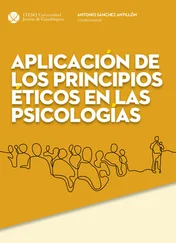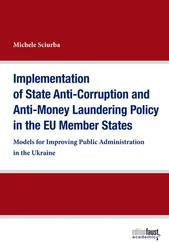Arsan Mur - Antonio Gramsci and Anti-bureaucratic revolution
Здесь есть возможность читать онлайн «Arsan Mur - Antonio Gramsci and Anti-bureaucratic revolution» — ознакомительный отрывок электронной книги совершенно бесплатно, а после прочтения отрывка купить полную версию. В некоторых случаях можно слушать аудио, скачать через торрент в формате fb2 и присутствует краткое содержание. ISBN: , Жанр: Прочая научная литература, на русском языке. Описание произведения, (предисловие) а так же отзывы посетителей доступны на портале библиотеки ЛибКат.
- Название:Antonio Gramsci and Anti-bureaucratic revolution
- Автор:
- Жанр:
- Год:неизвестен
- ISBN:9785005308733
- Рейтинг книги:5 / 5. Голосов: 1
-
Избранное:Добавить в избранное
- Отзывы:
-
Ваша оценка:
- 100
- 1
- 2
- 3
- 4
- 5
Antonio Gramsci and Anti-bureaucratic revolution: краткое содержание, описание и аннотация
Предлагаем к чтению аннотацию, описание, краткое содержание или предисловие (зависит от того, что написал сам автор книги «Antonio Gramsci and Anti-bureaucratic revolution»). Если вы не нашли необходимую информацию о книге — напишите в комментариях, мы постараемся отыскать её.
Antonio Gramsci and Anti-bureaucratic revolution — читать онлайн ознакомительный отрывок
Ниже представлен текст книги, разбитый по страницам. Система сохранения места последней прочитанной страницы, позволяет с удобством читать онлайн бесплатно книгу «Antonio Gramsci and Anti-bureaucratic revolution», без необходимости каждый раз заново искать на чём Вы остановились. Поставьте закладку, и сможете в любой момент перейти на страницу, на которой закончили чтение.
Интервал:
Закладка:
The end of the 50s – beginning of the 60s of the 20th century gave a new wave of interest in revolutions. The Soviet Union, contrary to forecasts, not only failed, but also emerged from the Second World War as a superpower, Eastern Europe turned into a “socialist camp”, and the people’s democratic revolutions proclaimed socialist took place in China and Cuba. This wave swept through the 60s and 70s and presented us with books such as “On Revolution” by Hannah Arendt (1963), “Revolution and the Social System” by Chalmers Johnson (1964), “Political Order in Changing Societies” by Samuel Huntington (1968), “Revolution” and “The Study of the Revolution” by Peter Calvert (1970), “Why People Rebel” by Ted Garr (1970), “Autopsy of Revolution” by Jacques Ellul (1971), “Modern Revolutions” by John Dunne (1972), “The Strategy of the Political Revolution” by Mostafa Rejai (1973), “The Phenomenon of the Revolution” by Mark Hagopian (1975), “The Revolution and the transformation of societies: a comparative study of civilizations” by Shmuel Eisenstadt (1978), “States and Social Revolutions” by Theda Skocpol (1979) and many others.
Perhaps this was the most powerful wave of interest in revolutions and the time of creating a systematic scientific approach to this social phenomenon, which continued to nourish the enthusiasm of researchers, slowly fading in the 80s. A new explosion of interest arose along with the “revolutions” of the late 80s – early 90s in Eastern Europe, causing new thoughts and discussions about the phenomenon of revolution in the history of mankind. After 2004, this interest was fueled by new events and data for the analysis of the so-called. “Color revolutions” in several states of the post-Soviet space, and so on. “Arab spring”, which, of course, will bring to life new generalizing work.
The most common approach to systematizing historiography to date has been proposed by Jack Goldstone, an American political scientist. This classification, of course, is not the only one and did not appear from scratch, combining and reworking existing among researchers, however, it is the most influential. This systematization is based on the so-called generations of researchers of the theory of revolution and has gained popularity and developed independently by many authors. The division of these generations occurs not only on a temporal basis, but also based on certain methodological principles that are attributed to the authors. In connection with this division, some representatives of the generation of the 60s fell into the group of the 20—30s, and P. Sorokin was attributed to the second generation. Thus, the first generation is associated with a historical approach and philosophical-historical interpretation. The second is with modernization theory and structural-functional analysis. The third generation, according to the developers of this approach, distinguishes state-centric models.
The first generation, from the point of view of adherents of this concept, refers to the 1920—30s. – “The generation of the natural history of the revolution” (after the title of Edwards’s work “The Natural History of Revolution”), to which belonged Edwards, Brinton, and Petty. To the second generation, Jack Goldstone ranked Ted Garr, Chalmers Johnson, Samuel Huntington, Charles Tilly (“From Mobilization to Revolution” (1978). To the third generation – Harry Eckstein “The Etiology of Internal Wars” (1965), Anthony Oberschall “Growing Expectations and Political Disorder” (1969), Edward Muller “Applicability of the Theory of Opportunity to the Analysis of Political Violence” (1972), Barbara Salert “Revolutions and revolutionaries” (1976), Theda Skocpol. J. Goldstone called last work “the crown of the third generation” [Goldstone, 59].
In the 90s Jack Goldstone said that “the third generation of theories of revolution is leaving the scene”: “not a single generally accepted theory of the fourth generation has yet been created, but the contours of such a theory are clear” [Goldstone, 99]. As targets for this fourth generation, Goldstone proposed revising all Skocpol’s key assumptions. “The stability of the regime in it will be considered as an unobvious state and substantial attention will be paid to the conditions for the existence of regimes for a long time; issues of identity and ideology, connections and leadership will occupy an important place; revolutionary processes and consequences will be seen as the result of the interaction of numerous forces. More importantly, it is possible that the fourth generation theories will combine the results of case studies, rational choice models and quantitative data analysis, and a generalization of these theories will cover situations and events that were not even mentioned in theories of the revolution of past generations” [Goldstone, 103].
It should be noted that any systematization should be based on homogeneous principles – criteria of one level. At the basis of the classification under consideration, all criteria (definitives) are in different planes. How can one compare the “historical approach” of a researcher with the idea of the modernization functions of the revolution or the basic principle of the model? You can only compare comparable categories. For example, those who invest in modernization functions and regressive functions, who place the principle of the role of state structures or demos organization at the forefront of revolution, those with a historical or mathematical approach (or any other), those who use structural-functional analysis and those who, for example, are repelled by form, quantity and strength, etc.
In many ways, the essence of the approaches of the entire XX and beginning of the XXI centuries. It boils down to the development of a theory of the revolution of Marxism or to the desire to oppose something to this theory. On the first side, revolutions are considered only in connection with a change in formations, on the second side, any massive radical forms of protest and coup d’etat fall into the revolution. It should be recognized that the Marxist approach is still more systematic and holistic, which constantly attracts adherents, and many of its provisions, one way or another, have been borrowed to this day. “The Marxist theory of society, often refined to the theory of revolution, remains one of the most stimulating models for the analysis of revolutionary processes of transformation” – a conclusion that many researchers have come to. The Marxist approach is more systemic, but sins with schematism. The three biggest shortcomings are the understanding of the revolution as a mandatory transition between formations, the inevitability of the proletarian revolution, which should lead to the emergence of the last formation (higher), economic determinism. The disadvantages of all opponents are more numerous. The lack of a clear definition of revolution (which allows “ripping” any riot, any significant social protest, ordinary coup d’etat into the term “revolution”), the causes of the emergence, the confusion of the causes of the revolution and what became the “trigger” – the reason for the first mass demonstrations.
A lot of research and criticism led to the fact that, regardless of the vulnerability of many of the formulations and provisions that came in the XX century, and were developed in its first third, in the subsequent XX century introduced little new. Most attempts to create something new lead to the same situation. The situation that has developed since the 80s. XX century can be classified as a methodological crisis: existing methodologies and research methods do not satisfy, new ones do not appear. The shortage of new developments leads to the fact that analytical models of researchers, the same definitions, and schemes with small modifications wander from research to research.
Читать дальшеИнтервал:
Закладка:
Похожие книги на «Antonio Gramsci and Anti-bureaucratic revolution»
Представляем Вашему вниманию похожие книги на «Antonio Gramsci and Anti-bureaucratic revolution» списком для выбора. Мы отобрали схожую по названию и смыслу литературу в надежде предоставить читателям больше вариантов отыскать новые, интересные, ещё непрочитанные произведения.
Обсуждение, отзывы о книге «Antonio Gramsci and Anti-bureaucratic revolution» и просто собственные мнения читателей. Оставьте ваши комментарии, напишите, что Вы думаете о произведении, его смысле или главных героях. Укажите что конкретно понравилось, а что нет, и почему Вы так считаете.












